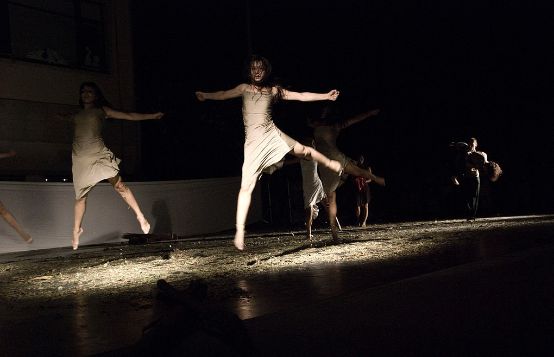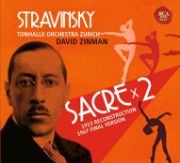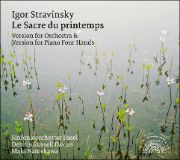Sacre 2 x 2
The Tonhalle Orchestra Zurich and the Basel Symphony Orchestra with new recordings of the work of the century and a different plus in each case.

May 29, 2013 marked the anniversary of the world premiere of Stravinsky's ballet Le Sacre du printemps for the hundredth time. Now there are two new recordings of the once scandalous piece by Swiss symphony orchestras from Zurich and Basel that are well worth listening to - and both have something special to offer.
David Zinman found the autograph of the original version, which his teacher Pierre Monteux conducted in Paris in 1913, in the archives of the Paul Sacher Foundation. On the Zurich double CD with detailed booklet, the original version is juxtaposed with the final version authorized by the composer in 1967. In a revealing conversation with the journalist Andreas Müller-Crepon, Zinman explains the differences, which mainly concern the instrumentation. However, it is almost only subtleties that set the original version apart from the revised version. The beginning on the French bassoon with its narrower scale instead of the German bassoon is one of the more striking ones - the instrument sounds almost like a soprano saxophone. The altered descent of the line at the theme repetition was obviously a scribal error on Stravinsky's part. Overall, the early version seems somewhat less brutal. The color mixtures are more subtle. The quavers in the strings in the Dance of the young girls are played with alternating strokes, which softens the harshness a little - but these are nuances. In David Zinman's powerful interpretation Le Sacre du printemps an explosion of color in both versions. The archaic rhythms are celebrated with great breath.
Stravinsky: Sacre x 2 (1913 Reconstruction + 1967 Final Version). Tonhalle Orchestra Zurich; David Zinman, conductor. RCA Red Seal 88843095462 (2 CDs)
Under the direction of Dennis Russell Davies, the Basel Symphony Orchestra also brings Stravinsky's unheard music to life in a sensual and vivid way. The The game of kidnapping in the first part has an animalistic character. In the Dance of the earth the filigree figures of the violins and trumpets are still audible in the powerful orchestral tutti. Only when the winds and strings play together does the precision occasionally suffer. And the reverberation of the timpani and bass drum seems too massive overall. The version for piano four hands, which is included here as a bonus, shows how simply Stravinsky sometimes constructed the complex work from ostinati and repetitions. But it is more interesting for musicologists, as the ballet music unfolds its charm for the listener precisely through the instrumentation and the different timbres. In the fortissimo, the grand piano played by Dennis Russel Davies and Maki Namekawa sounds hard and forced. The disturbing, rhythmic force of the orchestral sound cannot be sensed here.
Igor Stravinsky: Le Sacre du printemps (version for orchestra and for piano four hands). Basel Symphony Orchestra; Dennis Russell Davies, conductor and piano; Maki Namekawa, piano. SOB 06 (2 CDs)
The recording was awarded the Supersonic Prize by Pizzicato and has been nominated for the ICMA Music Award 2015.







